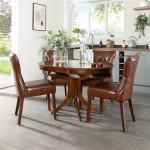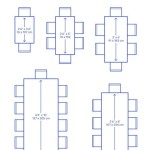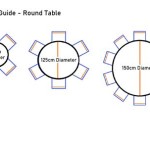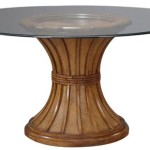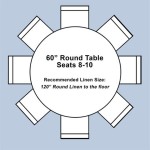What Is The Seating Order For The Top Table At A Wedding?
The top table, also frequently referred to as the head table, is a focal point at a wedding reception. It is where the key individuals participating in the wedding celebrations are seated. Determining the seating order is a matter of tradition, etiquette, and, increasingly, personal preference. While traditional arrangements offer a structured approach, modern considerations often prioritize inclusivity and family dynamics.
Understanding the customary seating arrangements provides a foundation for making informed decisions. This knowledge allows couples to adhere to tradition, adapt it to their particular needs, or completely discard it in favor of a more personalized approach. Regardless of the chosen arrangement, the primary goal is to create a comfortable and harmonious environment for those seated at the top table.
The following sections elaborate on the traditional seating order, alternative arrangements, and factors to consider when planning the top table.
Traditional Top Table Seating Order
The traditional top table seating order follows a strict hierarchical structure. It primarily prioritizes the bride and groom and their parents and ensures that the key figures giving speeches are centrally positioned for easy communication with the rest of the guests.
The most common traditional arrangement assumes a rectangular table facing the guests. The bride and groom occupy the central positions. To the bride's right sits the groom's mother, followed by the bride’s father, and then other members of the wedding party or family members depending on the table size and relationship dynamics. To the groom's left sits the bride's mother, followed by the groom’s father and then similarly other members of the wedding party as needed. This arrangement places both sets of parents prominently and ensures they are close to their respective children.
The rationale behind this arrangement is multifaceted. Firstly, it acknowledges the parents' significant role in the wedding and their support throughout the couple's lives. Secondly, it facilitates easy interaction and communication between the couple and their families. Thirdly, it balances the seating arrangement aesthetically and symbolically, creating a sense of harmony and familial unity.
In situations where one or both sets of parents are divorced, the traditional arrangement might be adapted. If both parents are amicable, they can still be seated in the traditional positions. However, if tensions exist, alternative arrangements might be more appropriate to avoid creating an uncomfortable atmosphere. For instance, stepparents may also be included, seating them further down the table or at separate tables altogether. Tact and sensitivity are crucial when navigating these situations. Communication with all parties involved is essential to ensure everyone feels respected and comfortable.
Similarly, if a parent has passed away, a close family member or friend who has played a significant role in the couple's lives can be seated in their place. This gesture can be a meaningful way to honor the memory of the deceased parent while also acknowledging the support and love of the chosen individual.
The traditional arrangement, while providing a solid framework, must be viewed as a guideline rather than a rigid rule. The ultimate goal is to create a seating arrangement that reflects the couple's unique family dynamics and ensures a positive and enjoyable experience for all those involved.
Alternative Top Table Arrangements
While the traditional seating order is widely recognized, many couples are opting for alternative arrangements that better suit their modern sensibilities and family structures. These alternatives prioritize flexibility, inclusivity, and personal preference.
One popular alternative is to have a "sweetheart table." This arrangement consists of a small table for just the bride and groom, allowing them to share intimate moments together during the reception. This option is particularly appealing to couples who prefer a more private and romantic setting. It also simplifies the seating arrangement process, eliminating the need to navigate potentially complex family dynamics at the top table. The parents and wedding party members would then be seated at tables closer to the couple, ensuring they remain integral to the celebration.
Another option is to include the entire wedding party at the top table. This arrangement is suitable for couples who have close relationships with their bridesmaids and groomsmen. Seating the wedding party together fosters a sense of camaraderie and celebration. The seating order within the wedding party is typically determined by seniority, with the best man and maid of honor closest to the bride and groom.
A modification of the traditional arrangement involves including grandparents or other significant family members at the top table. This gesture acknowledges their importance in the couple's lives and provides them with a prominent position during the celebration. This alteration often involves reducing the number of wedding party members at the top table to accommodate the additional family members. Communication with the wedding party is key to ensure they understand and support the decision.
Circular tables for the top table are also increasingly popular. This arrangement promotes a more egalitarian atmosphere, as there is no designated "head" of the table. The bride and groom are typically seated next to each other, with the other guests arranged around them. This arrangement is particularly well-suited for smaller gatherings where a more intimate setting is desired.
Regardless of the chosen alternative, it is essential to communicate the seating arrangement clearly to all those involved. This communication helps manage expectations and avoids any potential misunderstandings or hurt feelings. Open and honest discussions with family members and the wedding party are crucial for ensuring everyone feels valued and respected.
Factors to Consider When Planning the Top Table
Beyond the traditional and alternative arrangements, several key factors influence the final decision regarding the top table seating order. These factors encompass family dynamics, personal preferences, and logistical considerations.
Family dynamics are often the most significant factor to consider. As previously mentioned, divorced parents, stepparents, and other complex family relationships can significantly impact the seating arrangement. The goal is to create a seating arrangement that minimizes potential conflicts and ensures a comfortable and enjoyable experience for all family members. This might involve seating divorced parents at separate tables or including stepparents in the celebration in a way that respects all parties involved. Open communication and sensitivity are paramount.
Personal preferences also play a crucial role. The bride and groom should ultimately choose a seating arrangement that reflects their values and priorities. If they prefer a more intimate setting, a sweetheart table might be the most suitable option. If they value the camaraderie of their wedding party, including them at the top table might be a better choice. The decision should be based on what makes the couple feel most comfortable and happy on their wedding day.
Logistical considerations, such as the size and shape of the table, the number of guests to be seated, and the overall layout of the reception venue, also influence the seating arrangement. A large rectangular table can accommodate a larger number of guests, while a smaller round table might be more suitable for a more intimate gathering. The layout of the venue might also dictate the placement of the top table, which can, in turn, affect the seating arrangement.
The individuals chosen to give speeches should also be considered when planning the top table. Traditionally, the father of the bride, the groom, and the best man give speeches. Seating these individuals in close proximity to the microphone and the rest of the guests ensures they can be easily heard and seen. In modern weddings, other individuals, such as the maid of honor or the bride herself, might also give speeches. The seating arrangement should accommodate these speakers as well.
Finally, it is crucial to consider the overall atmosphere and aesthetic of the wedding when planning the top table. The seating arrangement should complement the theme and style of the wedding. For example, a formal wedding might call for a more traditional seating arrangement, while a more casual wedding might allow for greater flexibility. The decorations and table settings should also reflect the overall aesthetic of the wedding.
By carefully considering these factors, couples can create a top table seating arrangement that is both functional and aesthetically pleasing and ensures a memorable and enjoyable experience for themselves and their guests.

The Wedding Top Table Layout

Arranging Your Wedding Seating Plan And Top Table

Wedding Top Table Seating Arrangements Aby Joanne Photography

Wedding Top Table Layout Guide The Brewery

Wedding Top Table Seating Arrangements Aby Joanne Photography

Wedding Top Table Seating Arrangements Aby Joanne Photography

Wedding Top Table Diffe Arrangements

Wedding Etiquette Who Sits At The Bridal Table

9 Tips To Get Your Wedding Seating Plan Right Venue Experts

Seating Plans Sorted Socialandpersonalweddings Ie
Related Posts

